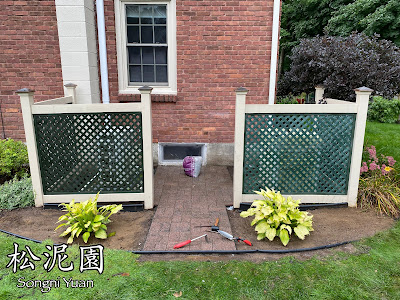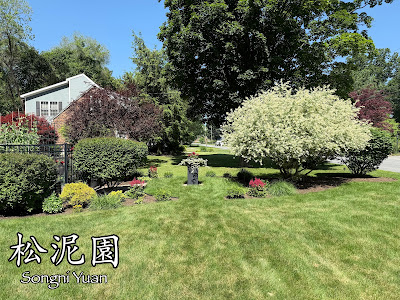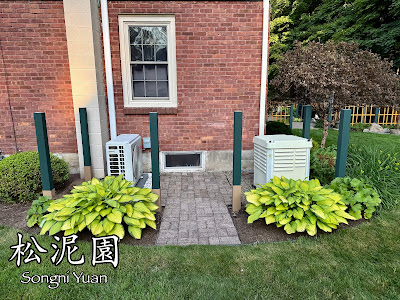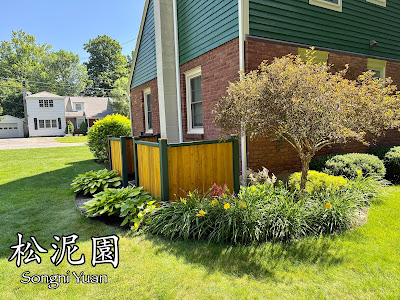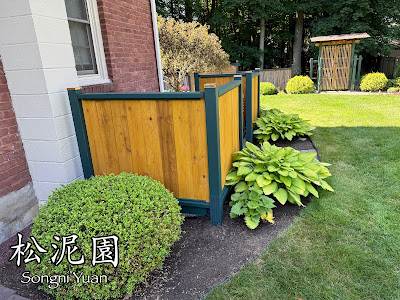When I started building the new fence along the back of the Dragon's Spine, I made a major mistake. The main cedar frame in the center required two posts that were 5' high.
Rather than purchase posts greater that 8', I opted to save money and attempt to build the frame with 8' posts, 3' below ground and 5' above. In theory, 3' below ground should be fine. However, I never had posts that rose to 5' or above that were not attached to cement sonotubes with a bracket.
The problem is that over the last two years the posts have shifted upwards a couple of inches due to frost heave.
As a result, the two posts, and the central panel are leaning back. I have to stop the lean before the outer panels of the overall fence begin to shift.
I had two choices from which to pick a solution:
1) dismantle the fence and add cement sonotubes and brackets to the two central posts
2) add 4 x 4 post braces behind the fence
Dismantling the fence to add sonotubes would be a major undertaking. Adding support braces would be less difficult. Also, if the sonotubes don't work, I would be stuck with two 3' deep cement footings that would be difficult to remove in the future. Installing cedar posts with post protectors and metal brackets would be easy to install, and easier to maintain or replace in the future.
Therefore, I added two support posts.
Similar to the work I completed recently on the Woodland Gate, I dug post holes, added two 8' posts with two rails each, and connected them with steel brackets. Each post also has a post protector to slow down rot at the ground level.
Instead of bolts to connect the posts, I am opting for steel brackets.
Doing so will allow me to avoid drilling through the main posts and having to hide the bolt holes that would be visible from the front. If over time the brackets don't hold, I can always add future bolts as a final solution.
Although slightly visible from the garden side of the fence, the posts remain mostly unseen unless one goes behind the fence.
I stained the support posts black to match the rest of the fence structure. I then added copper caps yo finish off the project.
The fence is now less likely to continue to lean back.
Hopefully this will slow done or solve the problem. Only time will tell.















































